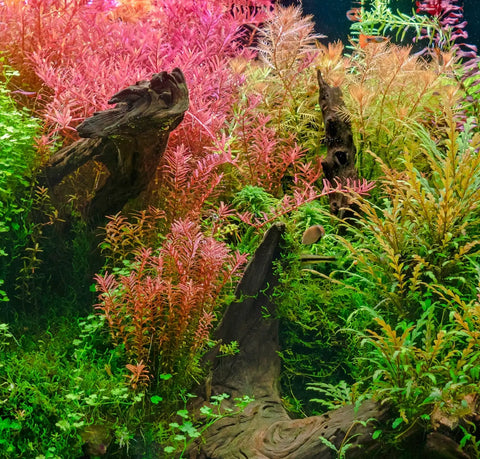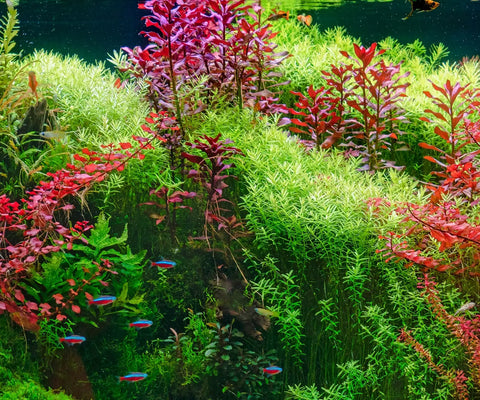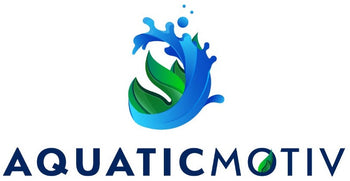A Beginners guide to the aquarium nitrogen cycle.
A colony of billions of bacteria living within your filter is the most basic explanation of what the nitrogen cycle is. The nitrogen cycle is a biological and chemical process that exists in every environment found in nature. It detoxifies harmful nitrogenous compounds within aquatic environments. These nitrifying bacteria also live in the soil and turn urea, ammonia, and various other nitrogenous compounds into nitrate. This is an important process for nutrient removal as nitrate is more readily utilized by plants of all kinds.

The aquarium nitrogen cycle is a two-step process that involves over a dozen species of bacteria. First, you have ammonia-oxidizing bacteria. This is a group of bacteria that create an oxidative reaction which then fuels that organism’s growth and development. They create this oxidative reaction by taking in ammonia and turning it into a different nitrogenous compound by the name of nitrite. This is the first step of the nitrogen cycle. As ammonia is the nitrogenous
compound created by decaying matter and fish waste. There is also urea which is released through the gills of the fish. Urea is then turned into ammonia and then utilized by the bacteria.
The second step of the aquarium nitrogen cycle is very similar to the first one. Instead of ammonia and urea, nitrite is used as an oxidative energy source. Nitrite is taken in and turned into nitrate. In the freshwater nitrogen cycle. Nitrate is the result and is significantly less harmful to aquatic life compared to ammonia and nitrite. Both ammonia and nitrite are quite toxic to aquatic life and in a fully cycled aquarium, the ammonia and nitrite level should remain at zero when tested. Though still water changes are a necessary part of aquarium keeping to maintain a nitrate level below 20 to 40 PPM. When an individual within the aquarium hobby asks if you have a cycled tank, they are specifically asking if your ammonia and nitrite level are at zero and fully converted to nitrate.

Another way aquarium hobbyists can determine whether your nitrogen cycle has been established is by asking how long your aquarium has been set up. Typically an aquarium cycle will take 3-4 weeks for each group of bacteria to establish. The total time it takes for the aquarium nitrogen cycle to establish is 6-8 weeks. These are various methods for accelerating the nitrogen cycle and reducing the amount of time it takes for the bacteria to establish. Let's go over a couple ways you can accelerate the nitrogen cycle within your aquarium.
The most commonly used method by new aquarists is bottled bacteria. There are a few issues with this method which we will quickly cover. First is the maximum density of live bacteria which you can house in a shelf-stable bottle which is marketed as good for several years. The density of bacteria within these bottles is quite low and will rarely establish an “instant cycle” as many of them advertise. They will accelerate the cycle by one to several weeks depending on the brand and how new the bottle is.

The second way you can accelerate the cycle is the most commonly used by
experienced fish keepers. This is moving mature filter media into your new filter. When using media of any kind, you'll simply move 20%-40% of the total media from your established and fully cycled aquarium to your new aquarium. This will instantly add large amounts of healthy and actively growing bacteria to a new filter. If you add enough of it you may even develop an instant cycle. Filter cartridges are usually utilized in hang-on back filters. You'll cut off the cloth on the outside of the filter, cut it in half, and then place one half in the new filter and the other half back into the old filter with a new cartridge. That way you won't remove enough to crash your established cycle but will still be able to seed your new filter with a large number of bacteria.

To restate some key points before wrapping up this article; the nitrogen cycle is a bacterial process that takes approximately 6-8 weeks to fully establish. The main indicator that you are fully cycled is when ammonia and nitrite levels are consistently zero. Ammonia and nitrite are highly toxic to aquatic organisms and keeping fish in an uncycled system can be deadly. Some fish do tolerate the process of cycling better than others. Because of this, some people choose to cycle with fish while others choose to cycle without fish. The fishless cycle is a
little more work but allows you to establish your cycle without harming the fish you are keeping. That is why some hobbyists end up choosing this method to cycle their aquariums.
Written by Jacob Thompson
Imagery by AquaticMotiv Llc


1 comment
Jesus Rivera Galan
Great information! I learned a lot.